The biggest stadiums in the world showcase what’s possible when engineering, scale, and purpose come together. These massive structures are designed to hold over 100,000 people and deliver a seamless experience for global events like the FIFA World Cup and the Olympic Games.
This article covers the 10 biggest stadiums in the world by seating capacity, all of which are still fully operational as of 2025. Each stadium listing includes key features, locations, uses, and how each stadium reflects changes in modern stadium design.
Note: Only stadiums that are fully operational as of 2025 and have confirmed seating capacities were included in this list.
1. Narendra Modi Stadium: World's Largest Cricket Stadium by Capacity
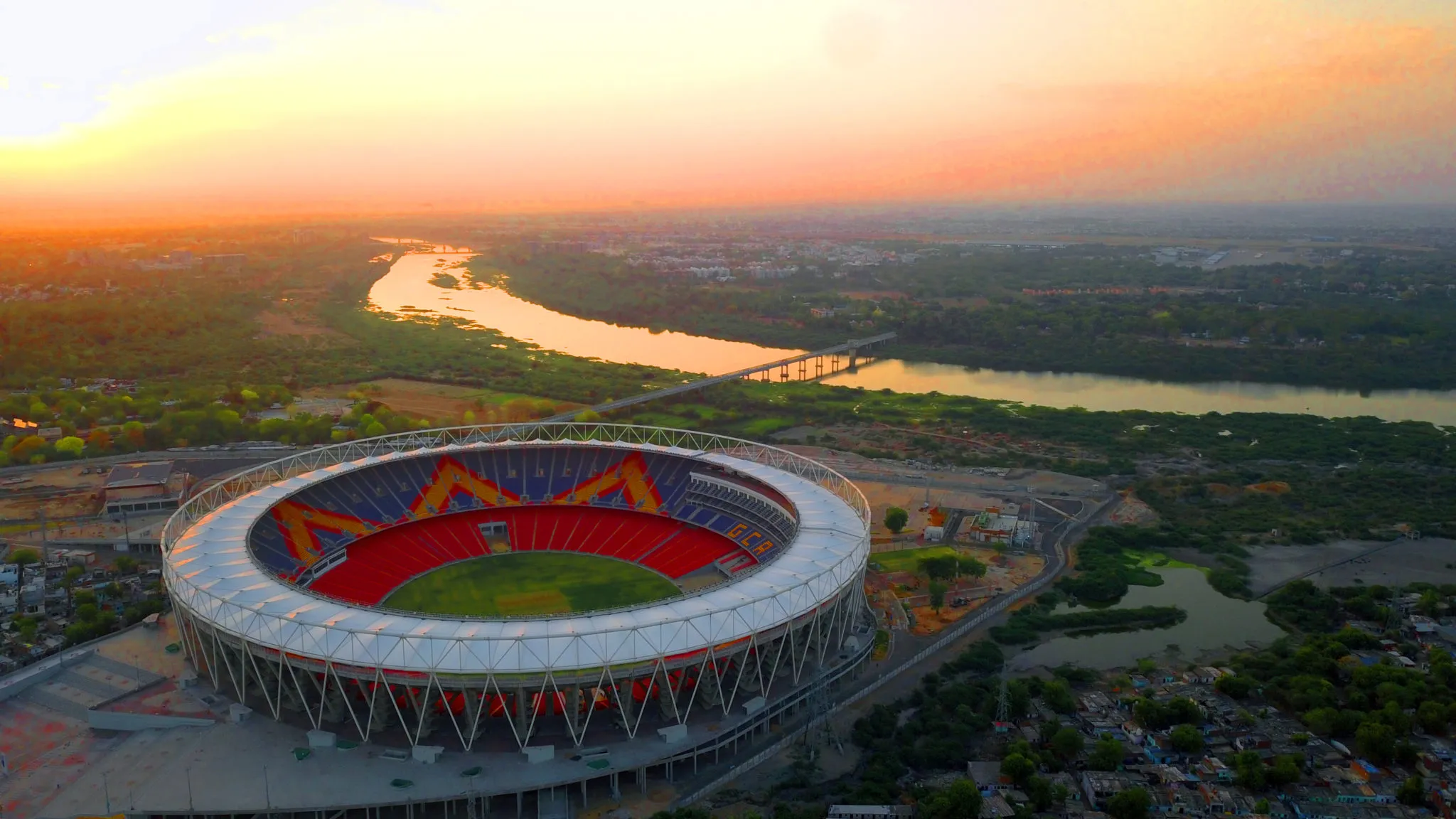
Ranked as the largest stadium in the world, Narendra Modi Stadium holds a remarkable 132,000 spectators. Once known as the Sardar Patel Stadium, it was completely demolished in 2015 and rebuilt over five years.
Narendra Modi Stadium officially reopened in February 2020 as a world-class cricket stadium. Its seating capacity highlights the cultural and economic power of cricket in India, especially as a host of major events like the Cricket World Cup.
- Official Capacity: 132,000 spectators
- Construction Cost: $100 million (rebuild, 2020)
- Designer: Populous
- Owner: Gujarat Cricket Association
- Location: Ahmedabad, India
- Primary Use: Cricket
Interestingly, Narendra Modi Stadium features an innovative pillar-less design, ensuring unobstructed views from every seat. It also boasts state-of-the-art LED lighting for night matches and a high-tech drainage system, quickly removing rainwater and minimizing delays.
2. Rungrado 1st of May Stadium: Giant Multi-Sport Venue in North Korea

With a capacity of 114,000, Rungrado 1st of May Stadium is the second largest stadium in the world. Built to project national unity and power, construction began in 1986 and the venue opened on May 1, 1989. A 2014 renovation reduced the original 150,000 capacity to improve safety and comfort.
- Official Capacity: 114,000 spectators
- Construction Cost: Not disclosed
- Designer: Not publicly credited
- Owner: Government of North Korea
- Location: Pyongyang, North Korea
- Primary Use: Mass Games, Association Football, Athletics
One of Rungrado May Day Stadium’s most striking features is the roof. Sixteen arches curve like flower petals, forming a giant magnolia. The stadium mainly hosts the Arirang Mass Games, a synchronized show with thousands of performers.
3. Michigan Stadium: Largest College Football Stadium in the USA
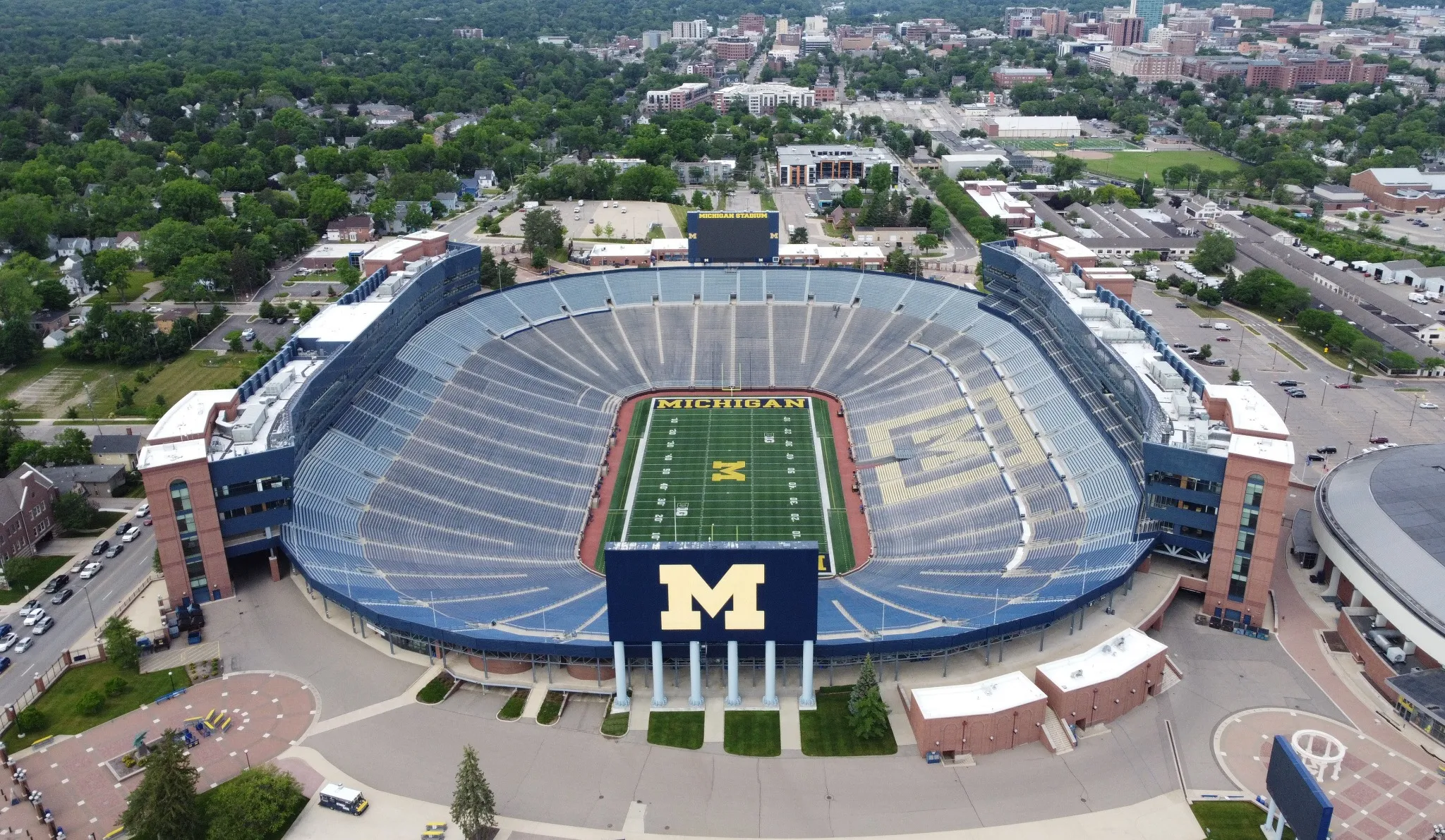
Michigan Stadium ranks as the largest stadium in the United States and the biggest in North America, with a capacity of 107,601. Construction began in 1926, and the stadium opened on October 1, 1927. Known as “The Big House,” this large stadium has hosted generations of college football crowds and remains one of the most iconic venues in American sports.
- Official Capacity: 107,601 spectators
- Construction Cost: $950,000 (1927)
- Designer: Bernard Green
- Owner: University of Michigan
- Location: Ann Arbor, Michigan, USA
- Primary Use: American Football
A large portion of Michigan Stadium’s bowl was built below ground level, creating a surprisingly intimate viewing experience. This approach helped preserve the surrounding skyline and made the stadium feel grounded in its setting. Michigan Stadium retains its classic bowl shape while integrating modern upgrades.
4. Beaver Stadium: Home of Penn State and the Famous White Out
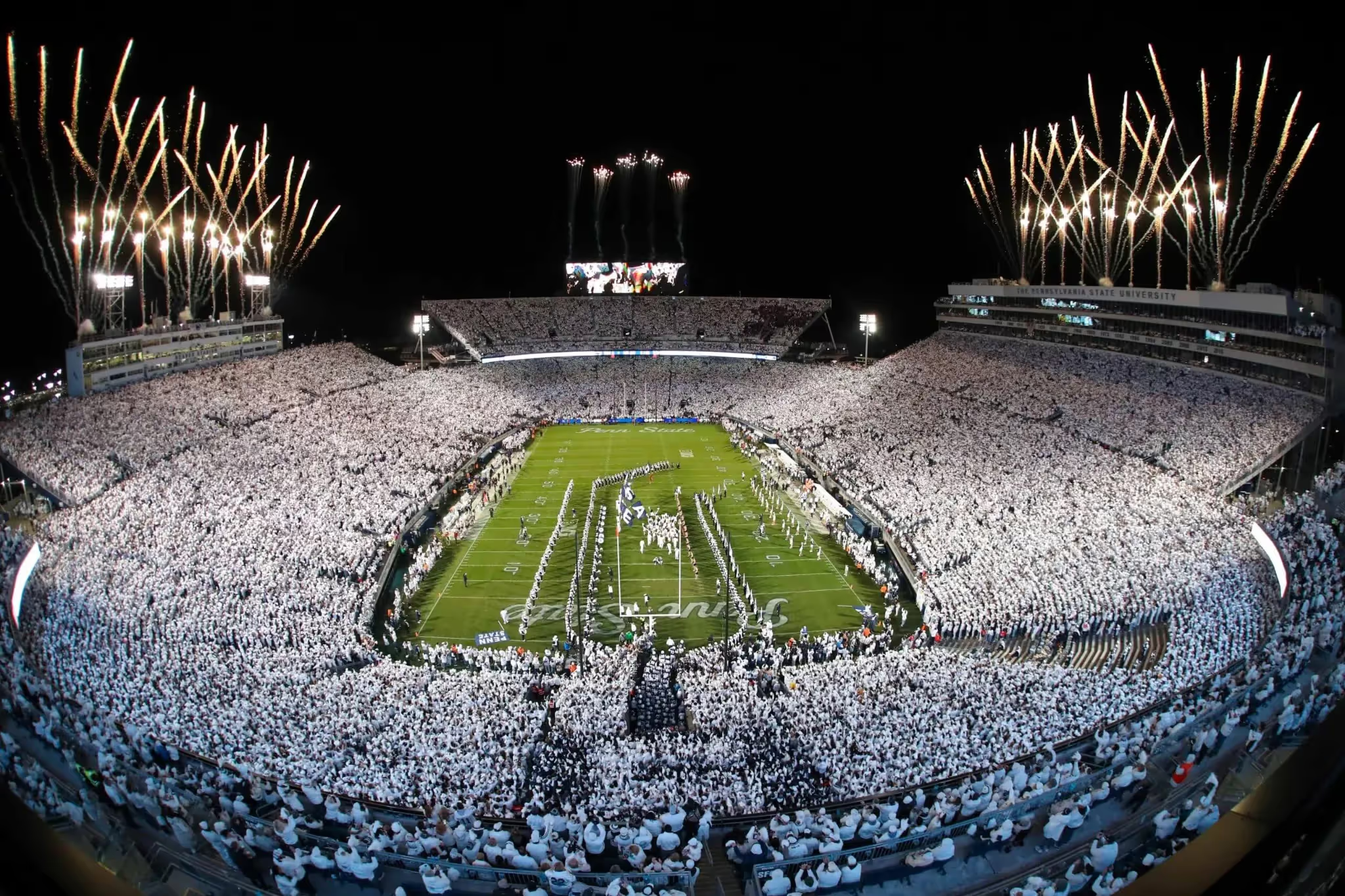
Beaver Stadium is the second-largest football stadium in the United States, with a seating capacity of 106,572. Construction began in 1959, and the stadium officially opened in September 1960. It remains a core part of Penn State’s identity, known for massive crowds and the electric “White Out” that fills the stands with white-clad fans.
- Official Capacity: 106,572 spectators
- Construction Cost: ~$700 million (renovation, 2025-2027)
- Designer: Populous
- Owner: Pennsylvania State University
- Location: State College, Pennsylvania, USA
- Primary Use: American Football
In 2025, Beaver Stadium began a renovation focused on rebuilding the west side with upgraded seating and amenities. Even during construction, Penn State will maintain over 100,000 seats using temporary structures. The full renovation is expected to be complete by 2027.
5. Ohio Stadium: One of the Oldest and Largest U.S. Stadiums
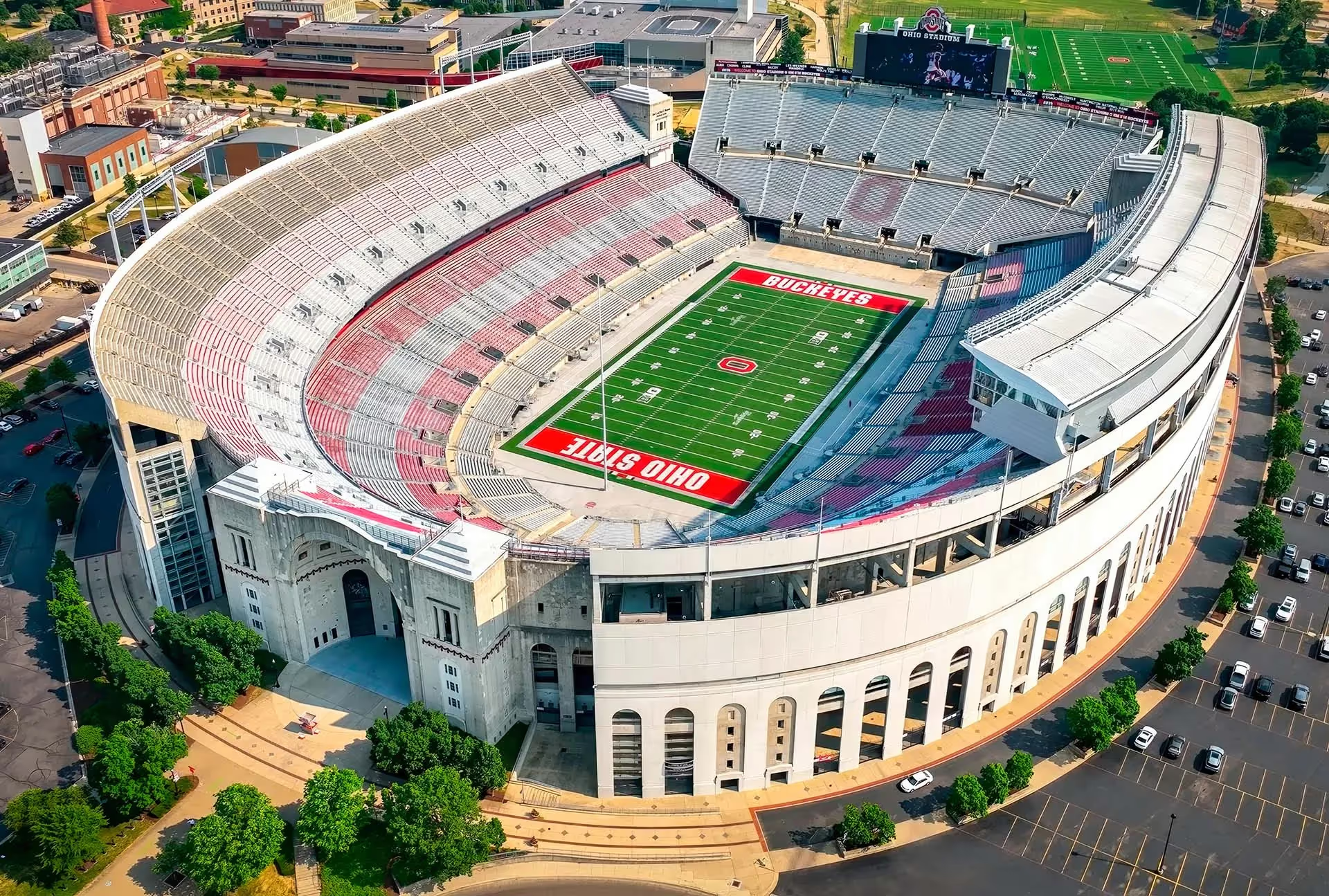
Ohio Stadium ranks among the biggest football stadiums in the United States, with a seating capacity of 102,780. Construction began in 1921, and the stadium officially opened on October 7, 1922. Nicknamed “The Horseshoe,” it has been the heart of Ohio State football ever since, welcoming over 36 million spectators through its gates.
- Official Capacity: 102,780 spectators
- Construction Cost: $1.34 million (1922)
- Designer: Howard Dwight Smith
- Owner: Ohio State University
- Location: Columbus, Ohio, USA
- Primary Use: American Football
Ohio Stadium’s original horseshoe shape was inspired by the Roman Colosseum, giving the venue both function and identity. A $187 million renovation in 2001 enclosed the south end, boosting capacity and turning up the crowd volume. Today, the Horseshoe stands as both a historic site and a game-day fortress.
6. Kyle Field: Largest Stadium in the Southeastern Conference (SEC)

With a capacity of 102,733, Kyle Field is the largest stadium in Texas and the Southeastern Conference. Construction began in May 1927, and the stadium officially opened in September of the same year. It serves as the home of the Texas A&M Aggies and the “12th Man,” a student section known for standing and cheering from start to finish.
- Official Capacity: 102,733 spectators
- Construction Cost: $485 million (redevelopment)
- Designer: Populous (redevelopment)
- Owner: Texas A&M University
- Location: College Station, Texas, USA
- Primary Use: American Football
Kyle Field underwent a $485 million renovation completed in 2015 that enclosed the stadium bowl and added multiple levels of seating. The structure was designed to trap sound, creating a deafening atmosphere that challenges even the most experienced visiting teams.
7. Neyland Stadium: Riverside Giant of Tennessee Football
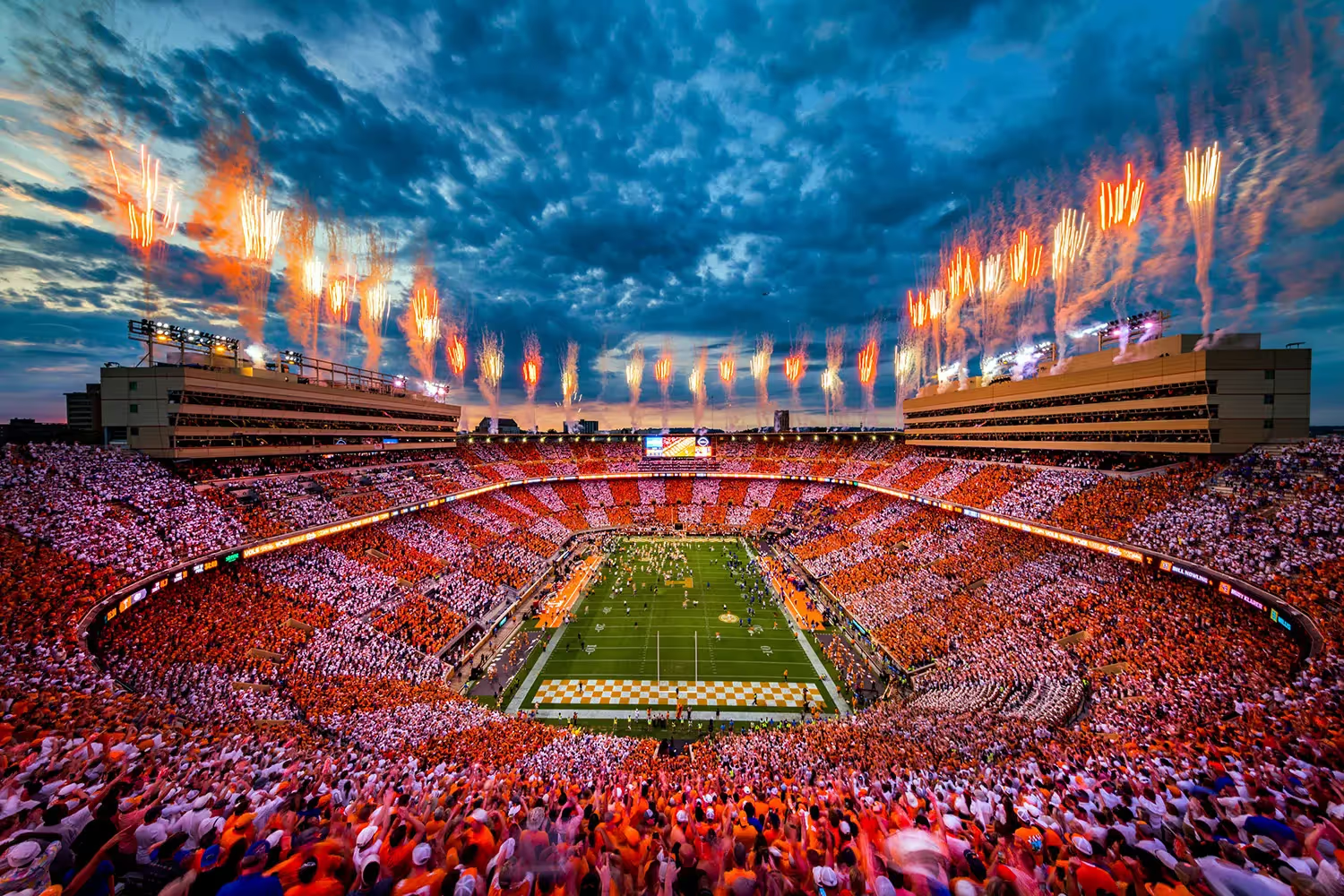
Neyland Stadium is one of the largest stadiums in college football, with a capacity of 101,915. Construction began in 1919 and was completed in March 1921. Originally known as Shields-Watkins Field, the stadium has long been the home of the University of Tennessee Volunteers.
- Official Capacity: 101,915 spectators
- Construction Cost: $337 million (2019-2026)
- Designer: Cope Architecture (current renovation)
- Owner: University of Tennessee
- Location: Knoxville, Tennessee, USA
- Primary Use: American Football
Few stadiums are accessible by boat, but Neyland proudly carries that tradition. Since opening in 1921 with just 3,200 seats, it has expanded 16 times. Recent renovations reduced seating capacity slightly in favor of improved fan amenities, but the game-day energy remains unmatched.
8. Darrell K Royal Stadium: Texas Football’s Grand Memorial Venue
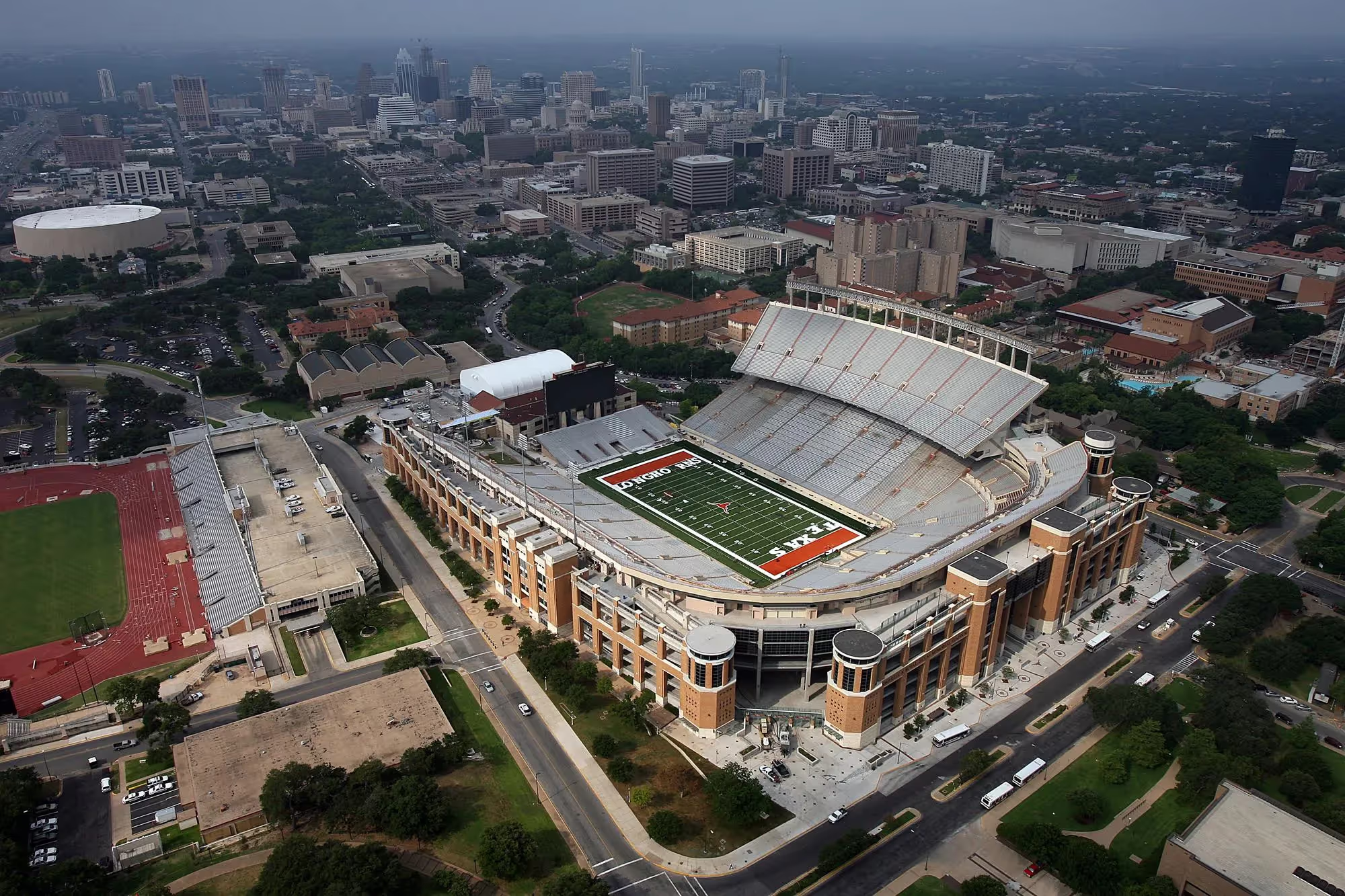
Darrell K Royal-Texas Memorial Stadium holds 100,119 fans, placing the venue among the ten biggest stadiums in the world. Construction began in 1924, and the stadium officially opened on November 8 of the same year. The facility is home to the Texas Longhorns and serves as a living memorial honoring military service.
- Official Capacity: 100,119 spectators
- Construction Cost: $275,000 (1924)
- Designer: Herbert M. Greene
- Owner: University of Texas
- Location: Austin, Texas, USA
- Primary Use: American Football
Originally dedicated to Texans who served in World War I, Darrell K Royal Stadium now honors veterans of all wars. A $175 million expansion completed in 2021 enclosed the south end zone and added modern amenities, including suites and a giant video board. The result is a football stadium that blends tradition with top-tier fan experience.
9. Bryant-Denny Stadium: Home of the Crimson Tide’s Dynasty
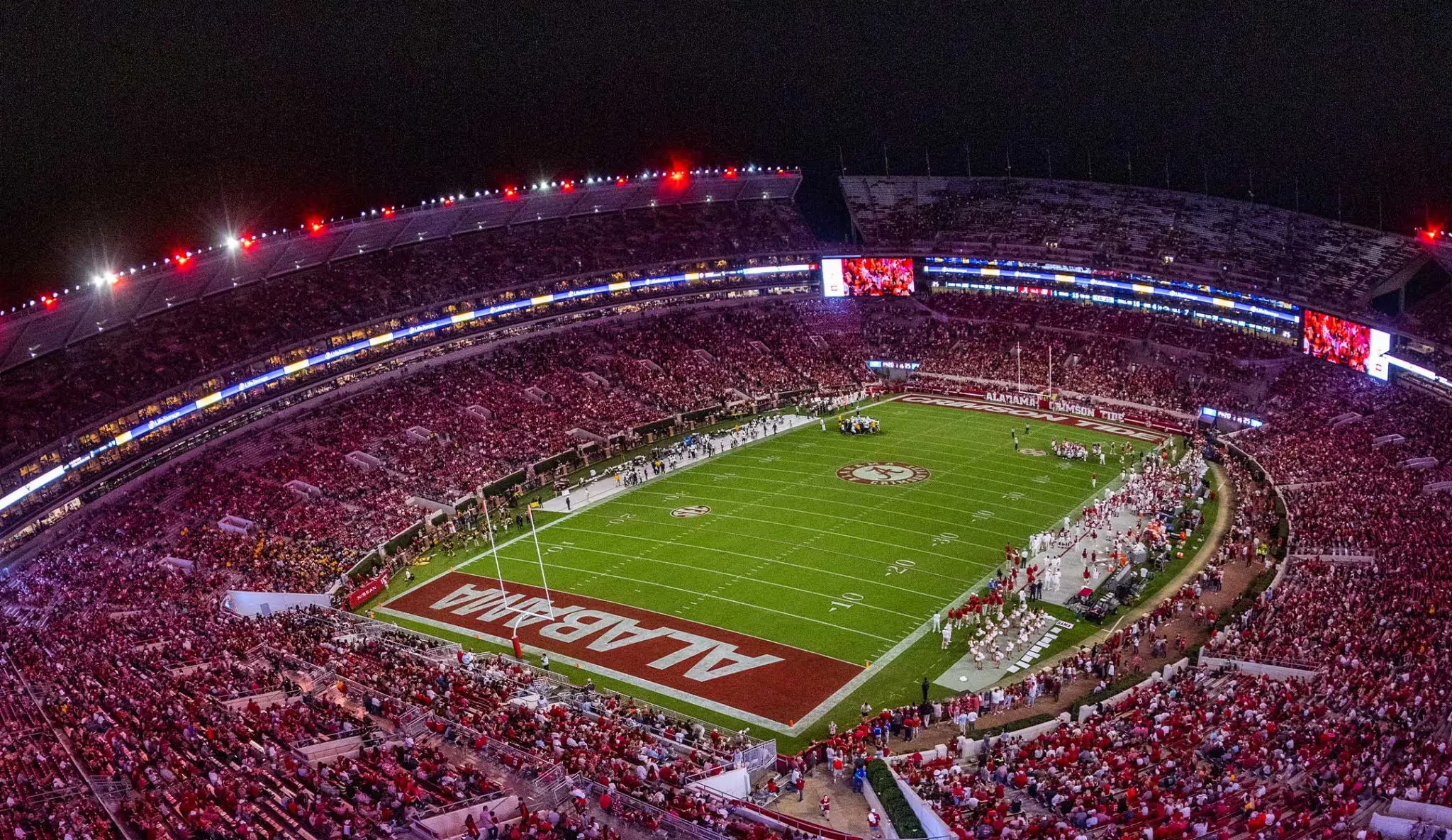
As one of college football’s biggest stadiums, Bryant-Denny Stadium can host up to 100,077 spectators. Construction began in 1928, and the stadium officially opened on September 28, 1929. The venue is home to the Alabama Crimson Tide, a team known for its dominance and devoted following.
- Official Capacity: 100,077 spectators
- Construction Cost: $86.6 million (renovation, 2020)
- Designer: Davis Architects and HOK (renovation)
- Owner: University of Alabama
- Location: Tuscaloosa, Alabama, USA
- Primary Use: American Football
Bryant-Denny Stadium is named after university president George H. Denny and legendary coach Paul “Bear” Bryant. Since opening in 1929 with 12,000 seats, it has expanded ten times. A 2020 renovation improved seating access and amenities while preserving the energy that defines Saturdays in Tuscaloosa.
10. Melbourne Cricket Ground: The ’G and Australia’s Sporting Landmark
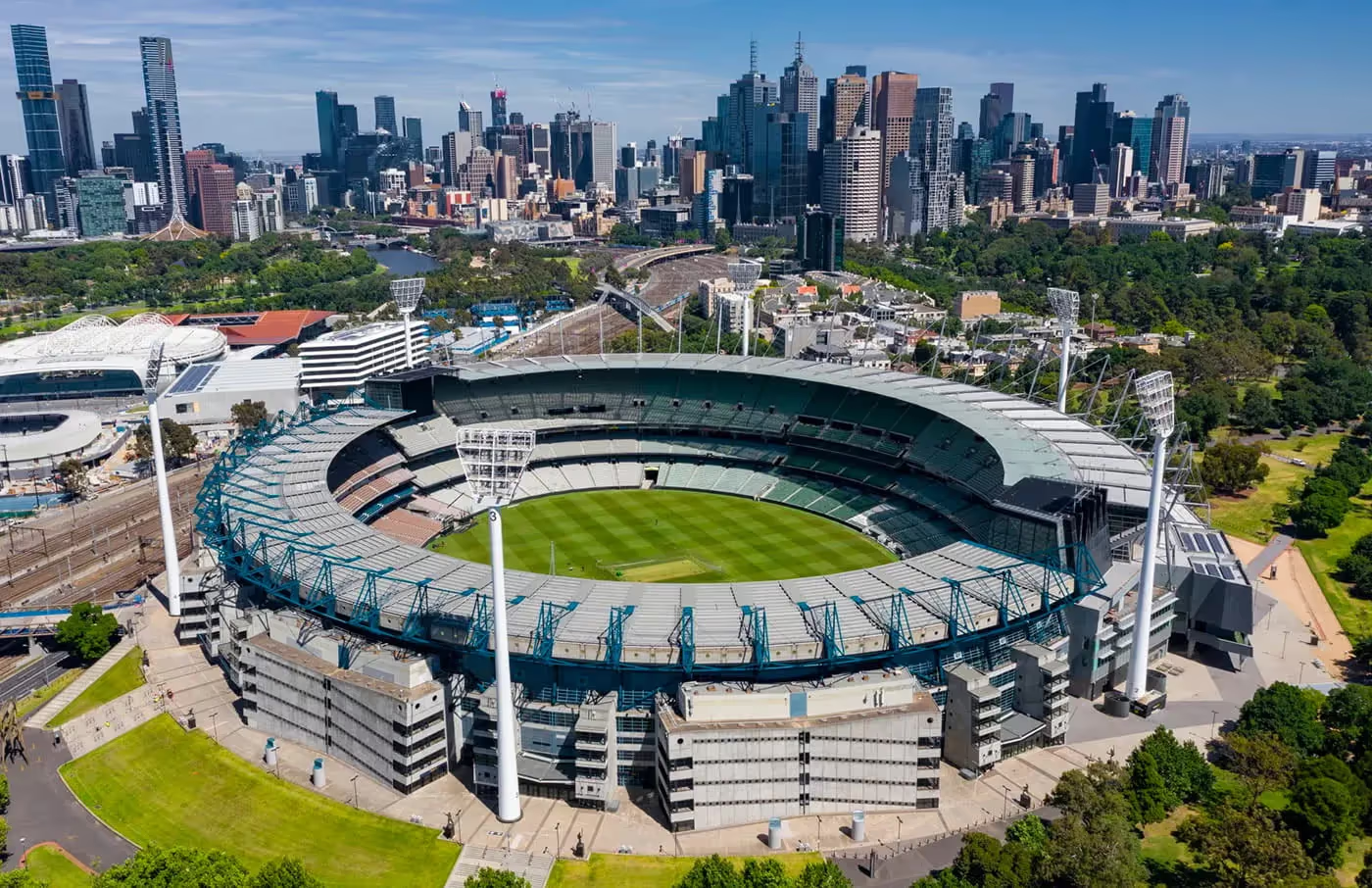
The Melbourne Cricket Ground holds 100,024 spectators, making it the largest stadium in Australia. Construction began in 1853, and the first match was played that same year. Known as “The ’G,” the stadium is a national treasure and a centerpiece of Australia’s sporting identity.
- Official Capacity: 100,024 spectators
- Construction Cost: $450 million (redevelopment, 2006)
- Designer: Populous + five other architects (redevelopment)
- Owner: Victoria State Government
- Location: Melbourne, Australia
- Primary Use: Cricket, Australian Rules Football
The MCG hosted the first-ever cricket Test match in 1877. The venue now serves as the main stage for international cricket in Melbourne and hosts the AFL Grand Final. Major redevelopments, including upgrades for the 2006 Commonwealth Games, have helped preserve its historic charm while keeping it world-class.
The Future of Stadium Design: Is Bigger Still Better?
For much of the last century, stadiums competed on size. Bigger meant better. But in 2025, that idea is shifting. Fan comfort, modern features, and all-season use now matter more than just seat count.
Large capacity still counts, but it is no longer the full story. Premium seating, fast connectivity, and flexible layouts are now key. The stadiums of the future will not just be the biggest stadiums. They will be the smartest and most unforgettable places to watch a game.












